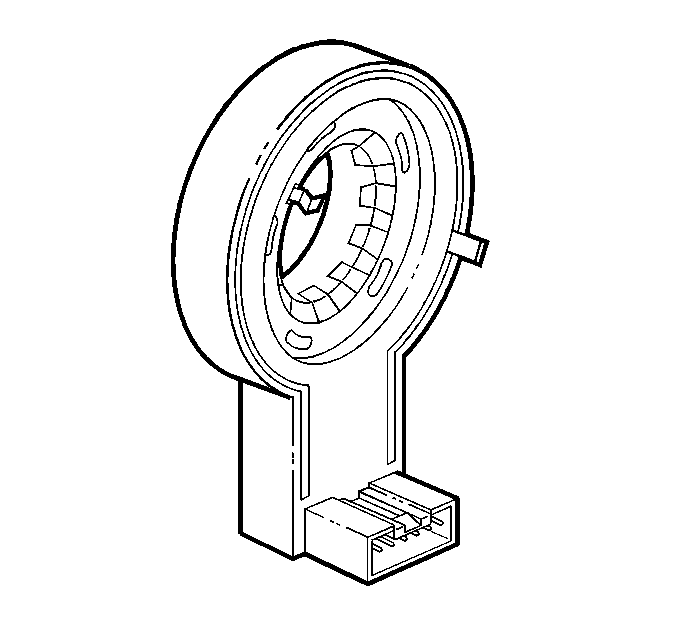Steering Wheel Position Sensor (SWPS)

The Steering Wheel
Position sensor has four outputs:
| • | Index pulse (Non-Active Handling vehicles only) |
This information is used to calculate three things:
| • | The front wheel's position when centered. |
| • | The front wheel's position when turning. |
| • | The vehicle's lateral acceleration. This is used for Magnasteer®2. |
The EBTCM uses the digital input (Phase A and Phase B) from the Steering
Wheel Position Sensor to calculate the direction the driver of the vehicle
is trying to steer during an ABS and/or Active Handling (RPO JL4) event. This
information is also used to calculate the vehicle's lateral acceleration for
Magnasteer®2.
The EBTCM runs a centering routine when the vehicle speed goes above
30 Km/h (18 mph). When the vehicle reaches 30 Km/h (18 mph), the EBTCM monitors
the Steering Wheel Position Sensor inputs (Phase A, Phase B and Analog voltage)
to see if the steering wheel is moving. If the steering wheel is not moving
for a set period of time then the EBTCM assumes the vehicle is going in a
straight line. At this point, the EBTCM looks at the analog voltage signal
and reads the voltage. This voltage, normally around 2.5V, is then considered
the center position and the digital degrees also become zero at the same time.
This centering routine is necessary to compensate for wear in the steering
and suspension. Wear in the steering and suspension can result in a change
in the relationship between the steering wheel and the front tires when driving
in a straight line. By running the centering routine, the EBTCM can compensate
for these changes by changing the digital and analog center position.

